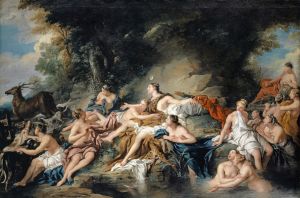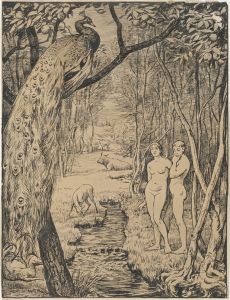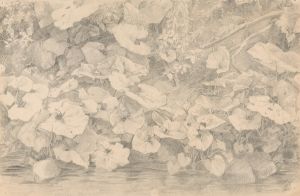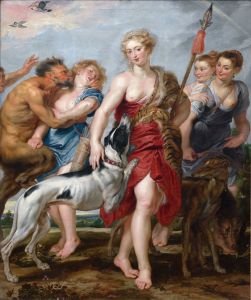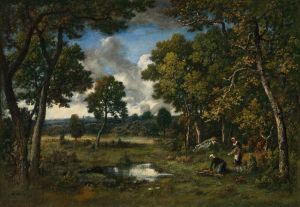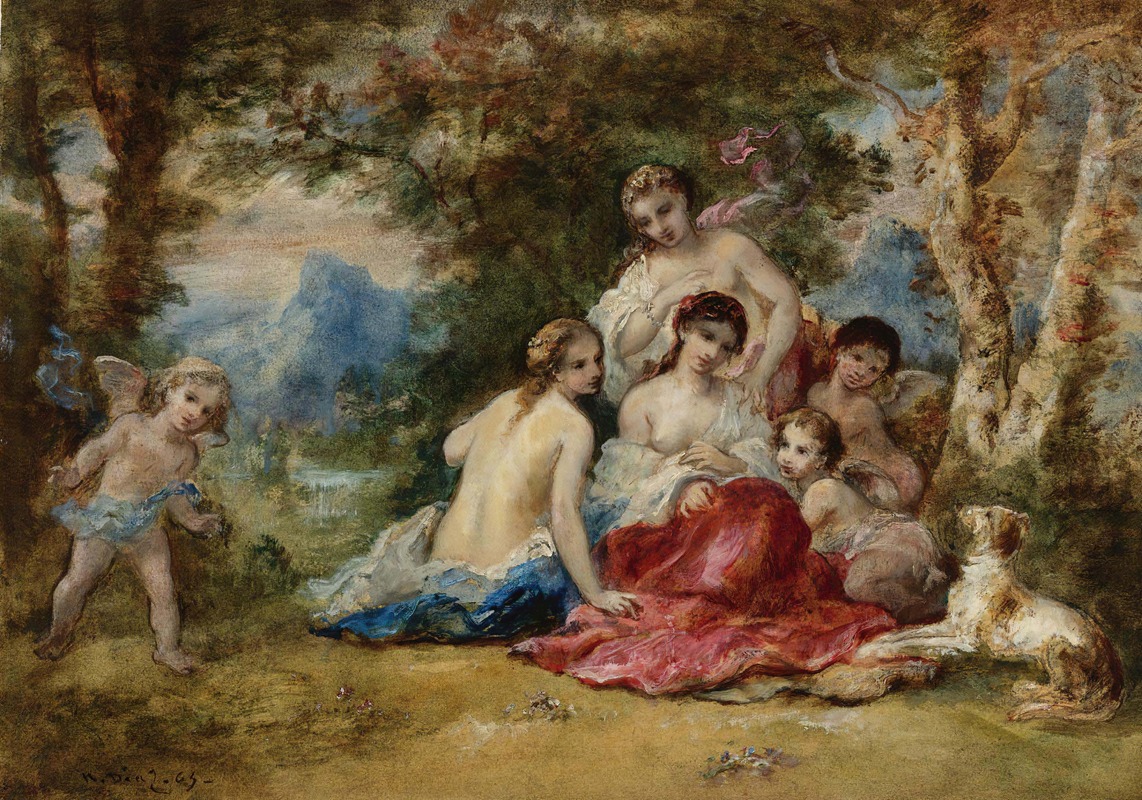
Les Hamadryades
A hand-painted replica of Narcisse-Virgile Diaz de La Peña’s masterpiece Les Hamadryades, meticulously crafted by professional artists to capture the true essence of the original. Each piece is created with museum-quality canvas and rare mineral pigments, carefully painted by experienced artists with delicate brushstrokes and rich, layered colors to perfectly recreate the texture of the original artwork. Unlike machine-printed reproductions, this hand-painted version brings the painting to life, infused with the artist’s emotions and skill in every stroke. Whether for personal collection or home decoration, it instantly elevates the artistic atmosphere of any space.
Les Hamadryades is a painting by the French artist Narcisse-Virgile Diaz de La Peña, created in 1853. Diaz de La Peña was a prominent figure in the Barbizon School, a group of painters who were part of the Realist movement in France during the mid-19th century. The Barbizon School artists were known for their landscape paintings and their practice of painting en plein air, or outdoors, to capture the natural light and atmosphere of the countryside.
Les Hamadryades depicts a mythological scene inspired by Greek mythology. Hamadryades, or Hamadryads, are nymphs who are intrinsically connected to trees, each one being born with a particular tree and living and dying with it. In this painting, Diaz de La Peña portrays these nymphs in a lush, wooded landscape, emphasizing the mystical connection between the figures and their natural surroundings.
The composition of Les Hamadryades is characterized by its rich, earthy tones and the detailed rendering of the forest environment. Diaz de La Peña's use of light and shadow creates a sense of depth and movement, drawing the viewer's eye through the dense foliage and towards the central figures. The nymphs themselves are depicted with a sense of grace and fluidity, their forms blending seamlessly with the trees and undergrowth around them.
Diaz de La Peña's technique in this painting reflects his broader artistic style, which often combined elements of Romanticism with a keen observation of nature. His brushwork is loose and expressive, capturing the textures and colors of the forest with a sense of immediacy and vitality. This approach was influenced by his time spent painting in the Forest of Fontainebleau, a popular location for Barbizon artists due to its diverse landscapes and natural beauty.
Les Hamadryades is notable not only for its artistic qualities but also for its place within the broader context of 19th-century French art. The painting exemplifies the Barbizon School's departure from the academic traditions of the time, which often favored historical and mythological subjects rendered in a highly polished, idealized manner. Instead, Diaz de La Peña and his contemporaries sought to depict the natural world with honesty and emotional resonance, paving the way for later movements such as Impressionism.
Today, Les Hamadryades is recognized as an important work within Diaz de La Peña's oeuvre and the Barbizon School as a whole. It is held in the collection of the Musée d'Orsay in Paris, where it continues to be appreciated by art historians and the public alike for its beauty and its contribution to the development of modern landscape painting.





